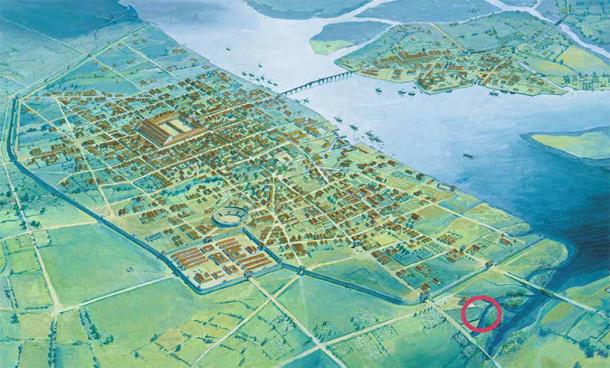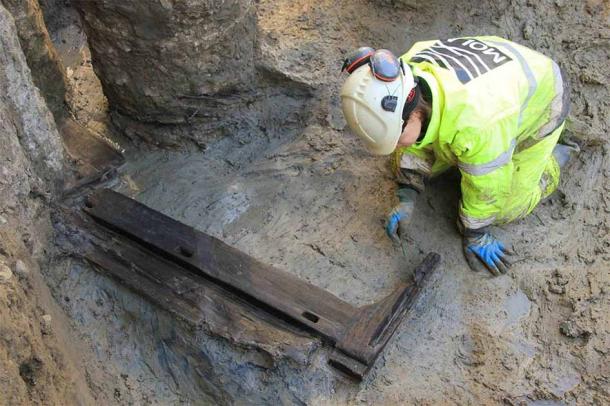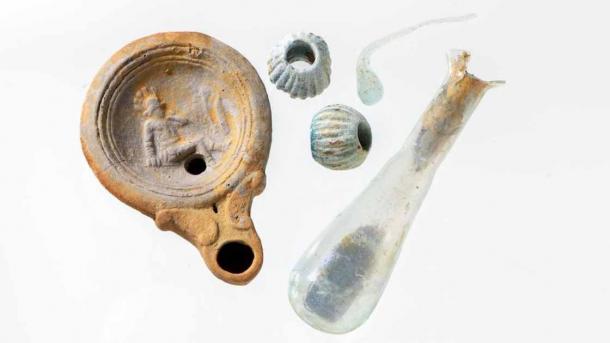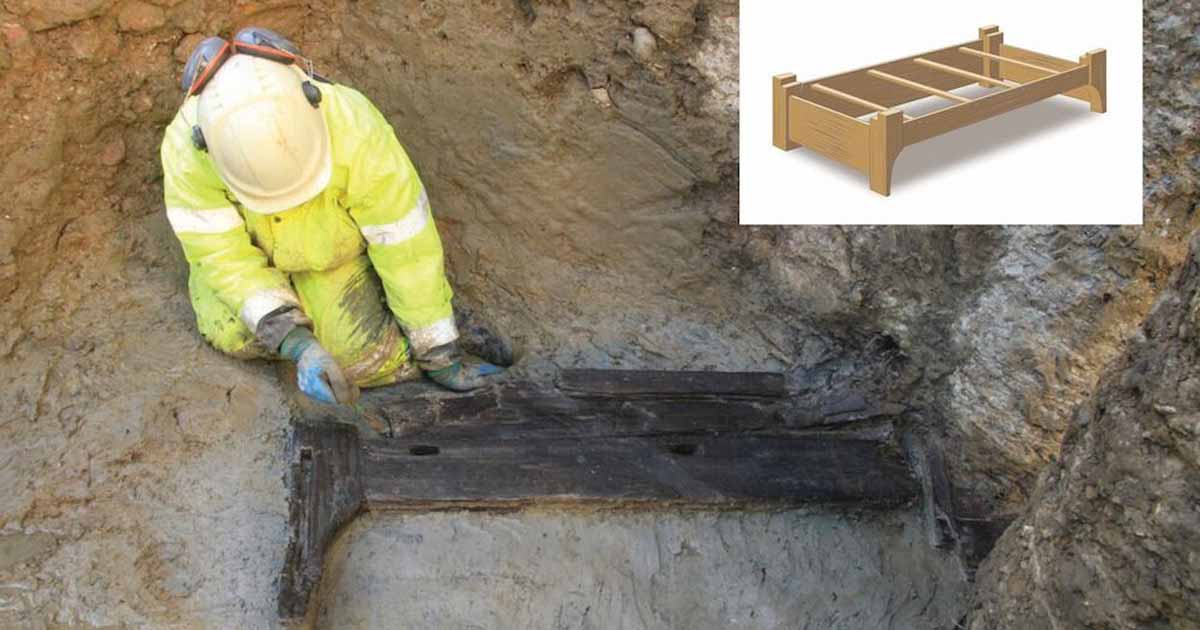“Flat-Packed” Roman Funerary Bed Found in London
In 2019 I wrote a news article on Ancient Origins about the UK’s first “flat-pack” medieval home. Now, archaeologists in London have announced their discovery of an incredibly well-made, and remarkably well preserved, flat-packed Roman funerary bed.
Representing a national “first,” the Roman funerary bed was recovered from a former Roman cemetery near Holborn viaduct in central London. The Roman bed burial was found alongside five oak coffins, adding to a collection of only three other Roman timber coffins ever found in London.
- “Absolutely Amazing” Roman Arm Guard Pieced Together After 1,800 Years
- 1,800-year-old Roman Venus Figurine Found In England Was A Home Deity
The funerary bed features carefully carved feet. Meanwhile, the joints were secured with small wooden pegs and analysis has determined that the artifact was crafted from “high-quality oak.” Evidence suggests the bed was dismantled, before being set in the 20 or 30-years old Roman man’s grave.

Roman bed burial was recovered within a former Roman cemetery, whose location is circled in red within this reconstruction of Roman London by Peter Froste. (MOLA)
Roman Bed Discovery Was a Complete Surprise
According to The Guardian, the Roman burial site is connected to the now-underground River Fleet. In fact, this natural humidifier is why the graves were found so well preserved. Writing in The Guardian, Michael Marshall, an artifacts specialist with the Museum of London Archaeology, MOLA, said the Roman bed was “carefully taken apart and stashed, like flat-packed furniture for the next life.”
Marshall explained that the find site, located outside the walls of the Roman city, was about 6 meters (19.7 ft) beneath the modern ground level. While the area had been excavated in the 1990s, discovering the intact Roman bed came as “a complete surprise,” who added that he had “never anything like it before.”

Archaeologist during the excavation of the flat-packed Roman funerary bed. (MOLA)
Revealing Symbolic Significance of the Roman Funerary Bed
Glass beads, a vial containing residue and a decorated lamp, all discovered at the site of the Roman cemetery, all dated to the earliest period of Roman occupation in Britain, between 43 AD and 80 AD. Previous to these new finds, archaeologists only had written accounts of beds being included in Roman funeral processions. These artifacts also appear carved on tombstones.
However, this discovery demonstrates that people were actually buried with Roman funerary beds. This is “the first time” hard evidence for these artifacts being used in funerary rites has ever been found in Britain, explained Marshall.
The Roman bed featured a carefully carved defeated Roman gladiator, described by Marshall as being “kind of a wonderful thing.” The symbolism of the fallen gladiator, according to the MOLA archaeologist, “makes sense in a funerary context.” He said it can be understood to represent someone who is dying, but fighting against death. Thus, analysis of such burial symbolism reveals the subtleties of mourning in the Roman world.

Other artifacts found within the Roman cemetery which revealed the Roman funerary bed included a Roman lamp, a glass vial and beads. (MOLA)
Roman Bed Burial Provides Evidence of High-Status
Described as “one of the fancier pieces” of furniture from Roman Britain, no other grave goods were found with the Roman bed burial. But the quality of wood, and skills displayed by the craftspeople who made it, suggests it was “almost certainly” the burial of a high-status person. Marshall said the bed display’s “proper joinery, as opposed to something banged together.”
- Artifact Reveals People Were Fed To Lions In Roman Britain
- Who Said Ancient People Had it Tough? Luxury Homes and Underfloor Heating Were a Part of Life in the Roman Province of Britannia
The Romans founded London as Londinium in 47 AD, later building a bridge over the River Thames. The settlement represented an important port, with roads leading to other Roman outposts in Britain. A British Museum article explains that one of the most important legacies of the Romans in Britain was their Roman road network, “which formed the skeleton of communications in Britain until the 18th century.”
However, the Roman road network only connected a handful of Roman cities, with “truly Roman foundations,” including York and London, while most other population centers had pre-Roman, Celtic origins. This highlights the importance of London within the greater Roman empire, and remained the largest Roman city in Britannia until 410 AD. What this all means is that whoever was buried with the “flat-pack bed” belonged to the upper-upper crust of the Roman hierarchy.
Top image: The Roman funerary bed during excavations in London and a reconstruction of the bed. Source: MOLA
By Ashley Cowie

















